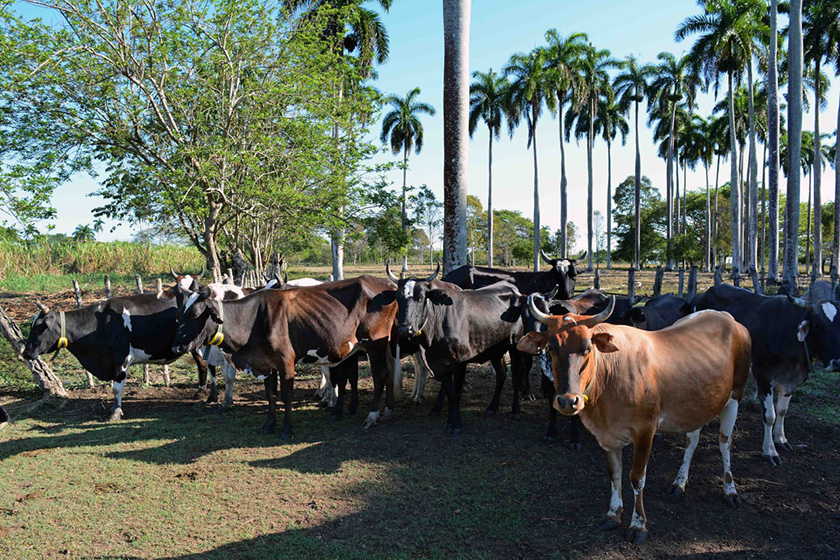![]()
Among the objectives currently accomplished are the evaluation of current management practices for dairy cows in four municipalities of Camagüey, and the identification of areas for possible improvement.

Camagüey, Cuba, Jul 13th.- The dissemination to farmers and decision makers of the benefits of modern herd management practices, is part of the actions that an international collaboration project is developing today in search of improving the potential of milk production in the central-eastern region of Cuba, led by the University of Camagüey (UC).
As part of these objectives, tomorrow, Thursday, the house of higher studies will host a workshop in which producers with good results in the activity, specialists from the provincial delegation of the Ministry of Agriculture, researchers from the UC, and representatives of the University Centers in the Municipalities of Najasa and Jimaguayú will participate.
During the day, the Doctor of Sciences José Bertot Valdés, professor of the Faculty of Agricultural Sciences of the academic institution of Camagüey, will give the conference “Data-based decision making: Importance of recording reproductive data in dairy cows”.
The meeting will promote the debate and exhibition of the producers included in the Project of international collaboration. Improvement of the potential of cow’s milk production, through the introduction of a health management program in the dairy herds of the mentioned region, executed with financing of the Flemish Interuniversity Council-University Cooperation for Development, Belgium.
The initiative conceives the use of automatic data collection systems, through the placement of intelligent electronic collars and tags on the animals, which have an electronic device inside (for example, a pedometer or an accelerometer), which monitors the physical activity of the cow, considered, according to experts, a reliable indicator of heat.
In turn, it offers information about the feeding behavior, rumination and inactivity of each animal.
Godofredo Garay Álvarez, coordinator of the project on the Antillean side, told the Cuban News Agency (ACN, Spanish Acronym) that the automatic system has, among other components, an antenna that covers a 250-meter radius and a data reader.
The information collected by the collar is transmitted wirelessly to the reader, and can later be consulted by the farmer through a computer or cell phone.
Four modules of 50 collars each were purchased, with the respective antennas and data readers necessary for their operation, he pointed out.
Among the objectives currently accomplished are the evaluation of the current management practices of dairy cows in four municipalities of Camagüey, and the identification of areas for possible improvement.
Similarly, the installation for the first time in Cuba of an external identification system (tag) and electronic identification (chip) of the cows involved in the Herd Health Management Program materialized, highlighted Garay Álvarez, Vice Dean of Research and Graduate Studies of the Faculty of Informatics.
On the other hand, there is a computer lab at the UC for the storage and processing of data from this program.
(ACN)